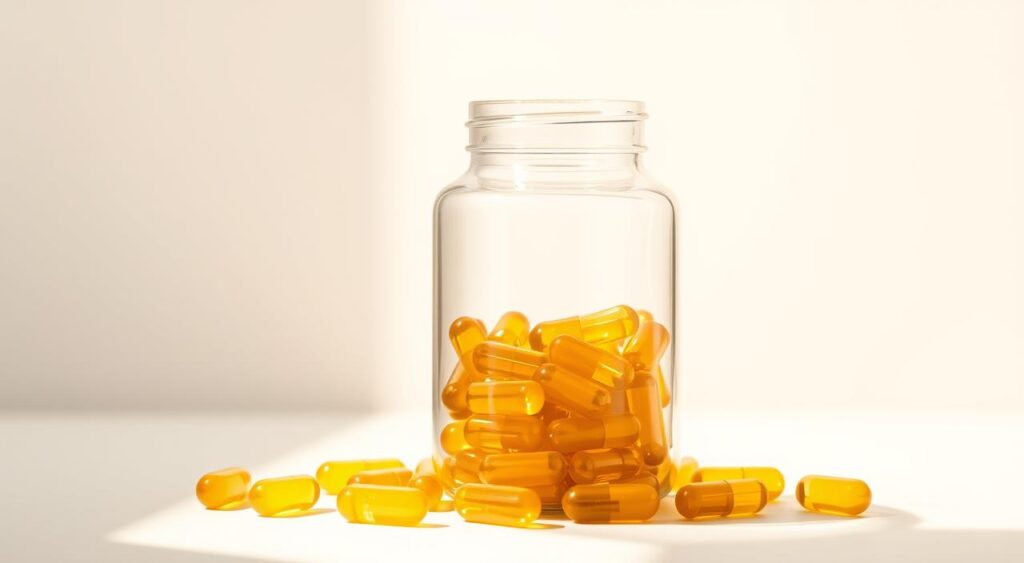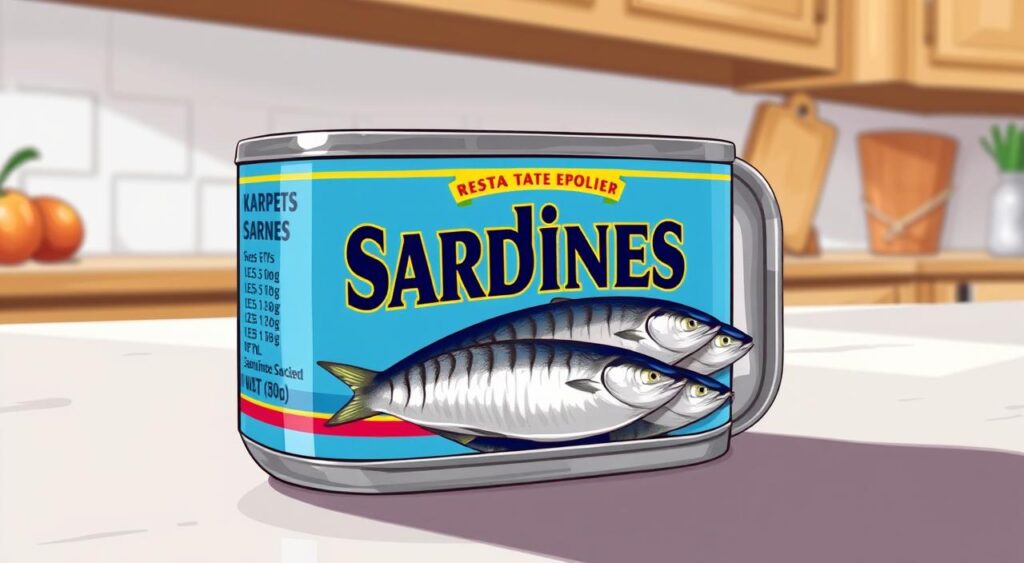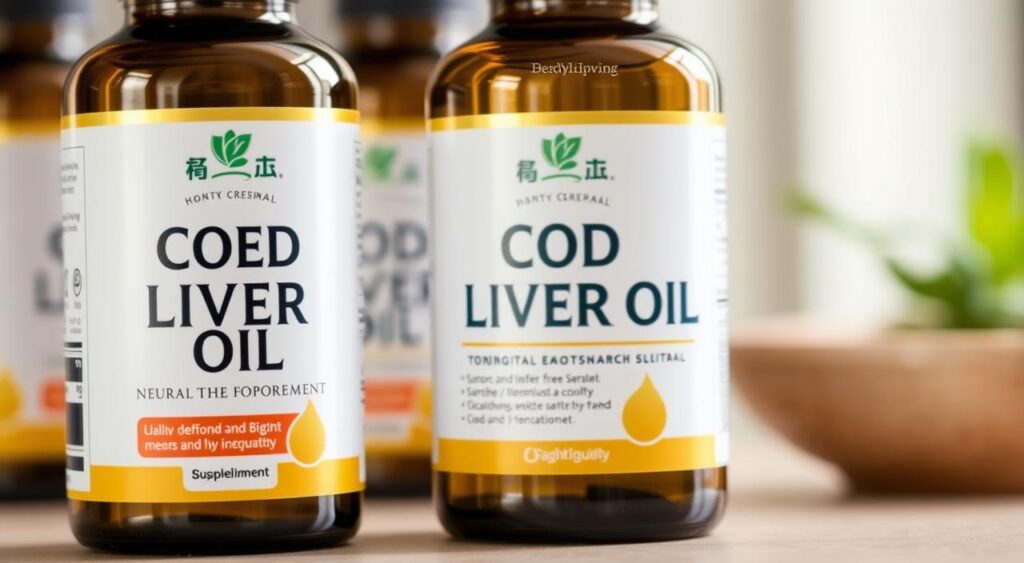Maintaining optimal health requires adequate intake of essential nutrients, one of which is vitamin D. Often referred to as the “sunshine vitamin,” vitamin D is crucial for bone health and offers numerous other benefits. While our bodies can produce it through sunlight exposure, dietary sources become vital when sun exposure is limited.
For adults over 19, the daily recommended intake is 600-800 IU (15-20 mcg). Incorporating vitamin D-rich foods into your diet can help meet this requirement. This is particularly important for individuals living in northern climates or those with limited sun exposure, especially during winter months.
Key Takeaways
- Understand the importance of vitamin D for overall health.
- Learn about natural and fortified food sources of vitamin D.
- Discover practical ways to include vitamin D-rich foods in your diet.
- Recognize the significance of vitamin D intake during limited sun exposure.
- Explore how a balanced diet supports bone health and immune function.
Why Vitamin D is Essential for Your Health

Vitamin D is a vital nutrient that plays a significant role in maintaining your overall health. It is essential for the absorption of calcium in your body, which is crucial for maintaining strong bones and skeletal integrity.
Vitamin D serves as a crucial nutrient that helps your body absorb calcium, making it essential for developing and maintaining strong, healthy bones throughout your life. Without sufficient vitamin D, your body cannot effectively utilize the calcium you consume.
The Role of Vitamin D in Bone Health
Getting enough vitamin D and calcium is crucial to maintaining bone health and protecting against disorders like osteoporosis, a condition characterized by weak, brittle bones. Vitamin D helps your body absorb calcium, which is necessary for maintaining bone strength.
| Benefits of Vitamin D | Description |
|---|---|
| Bone Health | Maintains strong bones and skeletal integrity |
| Immune System | Supports immune system function and reduces inflammation |
| Skin Health | May support skin health by regulating immune responses and reducing inflammation |
Beyond Bones: Other Health Benefits
Research suggests that vitamin D can support skin health in some interesting ways. Studies have shown that it may help regulate immune responses in the skin, support barrier function, and even reduce inflammation. Adequate vitamin D levels may also be obtained through sunlight exposure, although dietary sources are also essential.
Understanding Your Daily Vitamin D Needs

Understanding the recommended daily intake of vitamin D is essential for preventing deficiency and ensuring optimal health. The daily value (DV) for vitamin D is 600-800 IU (15-20 mcg) for adults over 19 years of age. This requirement varies by age, with different needs for children, pregnant women, and older adults.
Recommended Daily Intake for Different Age Groups
The recommended daily intake of vitamin D is not the same for everyone; it differs across various age groups. For instance, children and adolescents require vitamin D for bone growth and development, while older adults need it to maintain bone density and prevent osteoporosis.
| Age Group | Recommended Daily Vitamin D Intake |
|---|---|
| Children ages 4-8 | 600 IU |
| Children ages 9-18 | 600 IU |
| Adults ages 19-50 | 600-800 IU |
| Adults over 50 | 800 IU |
Signs of Vitamin D Deficiency
Vitamin D deficiency can manifest in various ways, including fatigue, bone pain, muscle weakness, and mood changes. Certain populations are at a higher risk, such as those with limited sun exposure, darker skin tones, obesity, or digestive disorders.
It’s estimated that nearly 40% of adults in the U.S. don’t get enough vitamin D, making dietary awareness crucial. Understanding food labels is key to tracking your vitamin D intake, as nutrition facts labels list vitamin D content as a percentage of the daily value (DV).
Vitamin D Foods from the Sea
Incorporating seafood into your diet can significantly boost your vitamin D intake. Fatty fish, in particular, are among the richest sources of vitamin D. Consuming these foods can help you meet your daily vitamin D needs.
Fatty Fish: Nature’s Vitamin D Powerhouse
Fatty fish are the most potent natural food sources of vitamin D. Wild-caught salmon, for instance, offers significantly higher vitamin D content than farmed varieties. A single 3.5-ounce serving of wild-caught salmon can provide 556-924 IU of vitamin D, delivering 70-116% of your daily value. Mackerel is another exceptional source, providing approximately 643 IU per 3.5-ounce serving, about 80% of your daily requirement.

Other Seafood Sources of Vitamin D
Besides fatty fish, other seafood options are rich in vitamin D. Halibut provides a moderate amount of vitamin D at 190 IU per serving. Canned sardines and herring are also good sources, offering 193 IU and 167 IU per 3.5-ounce serving, respectively. These options are not only rich in vitamin D but also provide omega-3 fatty acids that support heart and brain health.

Regular consumption of these seafood options can help maintain your vitamin D levels. It’s also worth noting that the vitamin D in fatty fish comes primarily in the D3 form, which is more effective at raising blood levels of vitamin D than the D2 form found in plant sources.
Cod Liver Oil: A Concentrated Source of Vitamin D

For those who aren’t fond of fish, cod liver oil offers a potent alternative for boosting vitamin D intake. At approximately 450 IU per teaspoon (4.9 mL), cod liver oil provides about 56% of the daily value (DV) for vitamin D.
Benefits and Recommended Intake
Cod liver oil is not only rich in vitamin D but also delivers significant amounts of vitamin A and omega-3 fatty acids. The EPIC-Norfolk Cohort Study found positive health associations with regular cod liver oil consumption, particularly for bone and joint health. When selecting cod liver oil supplements, look for products that specify vitamin D content and have been tested for contaminants.
Recommended intake: 1-2 teaspoons daily. However, it’s advisable to consult with a healthcare provider for personalized guidance.
How to Include Cod Liver Oil in Your Diet
You can incorporate cod liver oil into your diet by taking it straight from a spoon, mixing it into smoothies, or using flavored varieties. Some individuals find that taking cod liver oil with meals helps reduce potential digestive discomfort and improves absorption.
Tip: Be mindful of your total vitamin A intake, as excessive amounts can be problematic, especially during pregnancy.
Egg Yolks: An Everyday Vitamin D Food

You can easily increase your vitamin D consumption by making egg yolks a staple in your meals. Egg yolks are a rich source of vitamin D, and their nutritional benefits extend far beyond just this vitamin.
Nutritional Profile of Egg Yolks
Egg yolks are not only a good source of vitamin D but also provide other essential nutrients. One large egg yolk contains approximately 41 IU of vitamin D, which is about 5% of the daily value (DV). The vitamin D content in eggs can vary based on the production methods; eggs from chickens raised outdoors or exposed to UVB light have higher vitamin D levels.
The nutritional profile of egg yolks is impressive, offering choline, lutein, zeaxanthin, and high-quality protein. These nutrients support brain health and vision, making egg yolks a nutritious addition to your diet.
Creative Ways to Enjoy Eggs Daily
Incorporating eggs into your daily diet can be accomplished in various ways. You can enjoy eggs in breakfast scrambles, add them to salads, or use them in baked goods. Creative preparations like shakshuka, frittatas, or egg muffins can help prevent menu fatigue while maintaining your vitamin D intake.
Pairing egg yolks with other vitamin D-rich foods like salmon or mushrooms can create vitamin D-synergistic meals. For example, eggs benedict with salmon or an omelet with mushrooms are delicious and nutritious options.
For those concerned about cholesterol, research indicates that moderate egg consumption (up to one egg daily) is acceptable for most healthy individuals and provides valuable nutrients.
Mushrooms: The Plant-Based Vitamin D Option

If you’re seeking a natural way to increase your vitamin D levels, consider incorporating mushrooms into your diet. Mushrooms are a unique plant-based food source of vitamin D, making them an invaluable option for vegetarians and vegans.
How Mushrooms Produce Vitamin D
Mushrooms have the remarkable ability to synthesize vitamin D when exposed to ultraviolet light, similar to human skin. This process involves converting ergosterol to vitamin D2. While the vitamin D produced by mushrooms is in the form of D2, research indicates that it still effectively raises blood vitamin D levels.
Best Mushroom Varieties for Vitamin D
Some wild mushrooms, like morels, are naturally exposed to sunlight and contain significant amounts of vitamin D2. One cup of morels contains approximately 136 IU of vitamin D, which is 17% of the daily value. For a more substantial vitamin D boost, look for UV-treated cremini mushrooms, which can contain up to 1100 IU per cup, or 139% of the daily value.
When purchasing mushrooms for their vitamin D content, ensure that they are labeled as “UV-treated” or “vitamin D-enhanced.” This guarantees that you’re getting a product with significant vitamin D levels. Additionally, cooking methods don’t significantly reduce the vitamin D content in mushrooms, making them a versatile ingredient for various dishes.
Fortified Foods Rich in Vitamin D
Fortified foods are an accessible and consistent source of vitamin D for many Americans. With the increasing awareness of vitamin D’s importance, food manufacturers have begun fortifying various products to help consumers meet their daily needs.
Dairy Products and Plant-Based Alternatives
Dairy products are among the most common fortified foods. In the United States, virtually all cow’s milk is fortified with vitamin D, providing approximately 111 IU per cup, or about 14% of the daily value. Plant-based milk alternatives, such as soy milk, almond milk, and oat milk, are also typically fortified with vitamin D, often to levels similar to or higher than cow’s milk. For instance, one cup of soy milk can contain around 185 IU of vitamin D, or about 23% of the daily value.
Yogurt is another dairy product that can be fortified with vitamin D, though the levels can vary significantly between brands and types. When shopping for yogurt, look for products labeled as “vitamin D fortified” to ensure you’re getting a product with added vitamin D.
Fortified Breakfast Cereals and Juices
Breakfast cereals are another common category of fortified foods. Many popular brands contain between 10-100% of the daily value for vitamin D per serving. Fortified orange juice is also a good source, with one cup providing around 100 IU of vitamin D, or about 12% of the daily value. However, be mindful of the sugar content in orange juice and choose products with less added sugar.
Reading Labels: How to Identify Vitamin D-Fortified Foods
To make informed choices, it’s essential to know how to read food labels. Look for vitamin D content listed as a percentage of the daily value on the nutrition facts panel. Products that provide 20% or more of the daily value per serving are considered excellent sources. The FDA regulates vitamin D fortification, ensuring that products meet specific guidelines for safety and consistency.
When shopping for fortified foods, consider your dietary needs and preferences. For those with dietary restrictions, fortified foods offer crucial alternatives. Vegans can rely on fortified plant milks, cereals, and juices, while lactose-intolerant individuals can choose lactose-free fortified dairy or plant-based alternatives.
By incorporating these fortified foods into your diet, you can help ensure you’re meeting your daily vitamin D needs. Always check the labels to make the most informed choices.
Practical Meal Ideas to Boost Your Vitamin D Intake
Enhance your diet with these practical vitamin D-boosting meal ideas. Incorporating vitamin D-rich foods into your daily meals can be both delicious and nutritious. You can start your day with a vitamin D-packed breakfast, featuring scrambled eggs with UV-treated mushrooms and a glass of fortified orange juice, providing approximately 150-200 IU of vitamin D.
For lunch, consider a salmon salad sandwich, which not only offers a convenient meal option but also delivers 200-300 IU of vitamin D. Dinner can be just as nutritious with recipes like One-Pan Salmon with Roasted Vegetables or Salmon Zucchini Skewers, both of which can provide over 400 IU of vitamin D.
Vegetarian options are also available, such as a mushroom risotto made with UV-treated mushrooms, fortified milk, and topped with an egg. This dish creates a complete protein meal with significant vitamin D content. Additionally, smoothies made with fortified yogurt, plant milk, and vitamin D-fortified protein powder can serve as excellent snacks or meal replacements, offering 100-150 IU of vitamin D.
Other meal ideas include Eggs Benedict with salmon for a vitamin D powerhouse brunch, and batch cooking vitamin D-rich foods like salmon patties, egg muffins, or mushroom soups to ensure a consistent intake throughout the week. Exploring international cuisines, such as Japanese miso soup with mushrooms and eggs or Mediterranean sardine preparations, can also help boost your vitamin D levels.
Conclusion
With the importance of Vitamin D for bone health and beyond, focusing on Vitamin D-rich foods is a proactive health measure. Although your body can produce Vitamin D from sunlight, dietary sources are typically the safest way to meet your needs consistently.
Incorporating a variety of Vitamin D foods into your diet, such as fatty fish, egg yolks, mushrooms, and fortified products, can significantly boost your Vitamin D levels. It’s also crucial to remember that Vitamin D works synergistically with other nutrients, particularly calcium, making food combinations that include both especially beneficial for bone health.
By making conscious dietary choices and potentially adjusting your diet seasonally, you can support not just bone health, but also immune function and mood regulation. Regular monitoring of your Vitamin D levels can help determine the effectiveness of your dietary strategies. In conclusion, a balanced diet that includes a range of Vitamin D sources is key to maintaining optimal health.
FAQ
What are the best natural sources of this essential nutrient?
Fatty fish like salmon and mackerel are among the richest sources. You can also find it in egg yolks and certain types of mushrooms that have been exposed to sunlight or UV light.
How much of this nutrient do I need daily?
The recommended daily intake varies by age. Generally, adults need about 600-800 IU per day. It’s always best to consult with a healthcare professional to determine your specific needs.
Can I get enough of this nutrient from sunlight alone?
While sunlight is a significant source, factors like skin tone, age, and geographic location can affect production. During winter months or for individuals with limited sun exposure, dietary sources become crucial.
Are there any fortified products that can help me meet my daily needs?
Yes, many dairy products, plant-based milk, and breakfast cereals are fortified with this nutrient. Always check the labels to ensure you’re getting enough.
What are the signs of deficiency, and how can I address them?
Common signs include fatigue, bone pain, and mood changes. If you’re experiencing these symptoms, consult a healthcare professional for proper diagnosis and treatment, which may include dietary adjustments and supplements.
Can children benefit from consuming Vitamin D-rich foods?
Absolutely, children need this nutrient for bone growth and development. Ensure they’re getting enough through a balanced diet that includes sources like fortified milk and fatty fish.
How can I incorporate more of this nutrient into my diet?
You can start by adding fatty fish to your meals a few times a week, using egg yolks in cooking, and choosing fortified dairy products or plant-based alternatives. Experimenting with recipes that include mushrooms exposed to UV light can also be beneficial.



